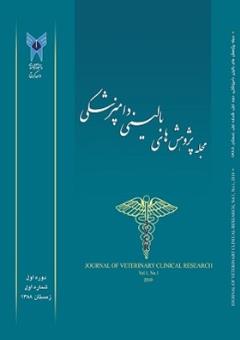Veterinary medical education in the 21st century: Old presumptions and new problems- On the occasion of the publishing of the book "A reflection on the veterinary medical education: from theory to practice
Subject Areas : clinical veterinary science
1 -
Keywords: veterinary education program, the veterinary curriculum, revision ,
Abstract :
The veterinary education program (VEP) was critically reviewed extensively in the 20th century; first by the Committee on Education of the American Veterinary Medical Association (AVMA) in 1931, and second, by the Pew National Veterinary Education program in 1989. Both reports emphasized on the necessity of a broad-based general education, developing skills in oral and written communication and an integrated understanding of the world, its people and their cultures.
1. Larry, P. Thornberg. Four essential components of veterinary education for the 21st century. Journal of the American Veterinary Medical Association (JAVMA). 1992 Oct 15;201 (8):1180-3.
2. Hodgeson, JL. & Ilkiw J.E. (2017). Curricular design, Review, and Reform. In: Hodgeson, JL. & Pelzer, JM. (Eds) Veterinary Medical Education. P:7, Wiley Blackwell.
3. Hubble, J.A. Shaffer, A. (1998). A circle model of Veterinary education. Journal of the American Veterinary Medical. Association. 212(2):186189.
4. Wilks, M.S., Srinivasan, M (2017). Problem-based learning, Chapter 18, section 3: Educational strategies and technologies. In: Dent, J.A. Harden, R.M., Hunt D., A Practical guide for medical teachers.Elsevier, 5th ed. PP. 134-142. (Accessible at https://edc.savehums.ac.ir/file/download/page/1618211225-harden-a-practical-guide-for-medical-teachers-5th-edition.pdf#page=22 [Accessed: 7 August 2022])
5. Tullo, E., Finzi, A., Guarino M. (2019). Environmental impact of livestock farming and Precision Livestock Farming as a mitigation strategy. Science of the Total Environment, 650: 2751–2760. https://doi.org/10.1016/j.scitotenv.2018.10.018.
6. Radostitis, O.M. (2004). Bovine Practice: Successes of the past and challenges and opportunities in the future. Proceedings of the 23rd world Buiatrics congress, 1-33, Quebec, Canada, 11-16.
7. Constable, P. (2016). An exciting future for the education of food supply veterinarians. Proceedings of the 29th congress of the world association for Buiatircs. PP, 49-52, Dubline, Ireland, 3-8.
8. Hooper, B.E. (1994). Ongoing curricular change in veterinary medical colleges. Journal of Veterinary Medical Education. 21(2)125-129.
9. Morin, DE., Constable, PD., Troutt, HF., Johnson, AL. (2002 a). Individual animal medicine and animal production skills expected of entry-level veterinarians in bovine practice. Journal of the American Veterinary Medical Association, 221: 959-968.
10. Morin, DE., Constable, PD., Troutt, HF., Johnson, AL. (2002 b). Surgery, anesthesia, and restraint skills expected of entry-level veterinarians in bovine practice. Journal of the American Veterinary Medical Association, 221: 969-974.
11. Miller, R.B., Hardin, L.E., Cowart, R.P., Ellersieck, M.R. (2004). Practitioner-Defined Competencies Required of New Veterinary Graduates in Food Animal Practice,. Journal of Veterinary Medical. Education 31(4): 347–365.
12. Luby, C.D, McIntyre, K., Jelinski, M.D. (2013). Skills required of dairy veterinarians in western Canada: A survey of practicing veterinarians. Canadian Veterinary Journal, 54: 267-270.
13. Salmanzadeh et al. (1995) The opinions of medical graduates on the educational contents in terms of performance and conformity with the societal health and treatment requirements. Quarterly Journal of Research and Planning in Higher Education. Vol.3, No. 2, Period 10 PP 61-77 (in Persian).
14. https://cvm.ncsu.edu/education/dvm/program/clinical competencies/#1568654731111-ae1fd5df-a81d (accessed, 28 July 2022).
15. Mayen, F. (2006). A Status Report of Veterinary Education in Ethiopia: Perceived Needs, Past History, Recent Changes, and Current and Future Concerns. Journal of Veterinary Medical Education, 33(2): 244-247.
16. Pritchard, WR. (1989). ed. Future directions for veterinary medicine. Durham, NC: Pew National Veterinary Education Program.

